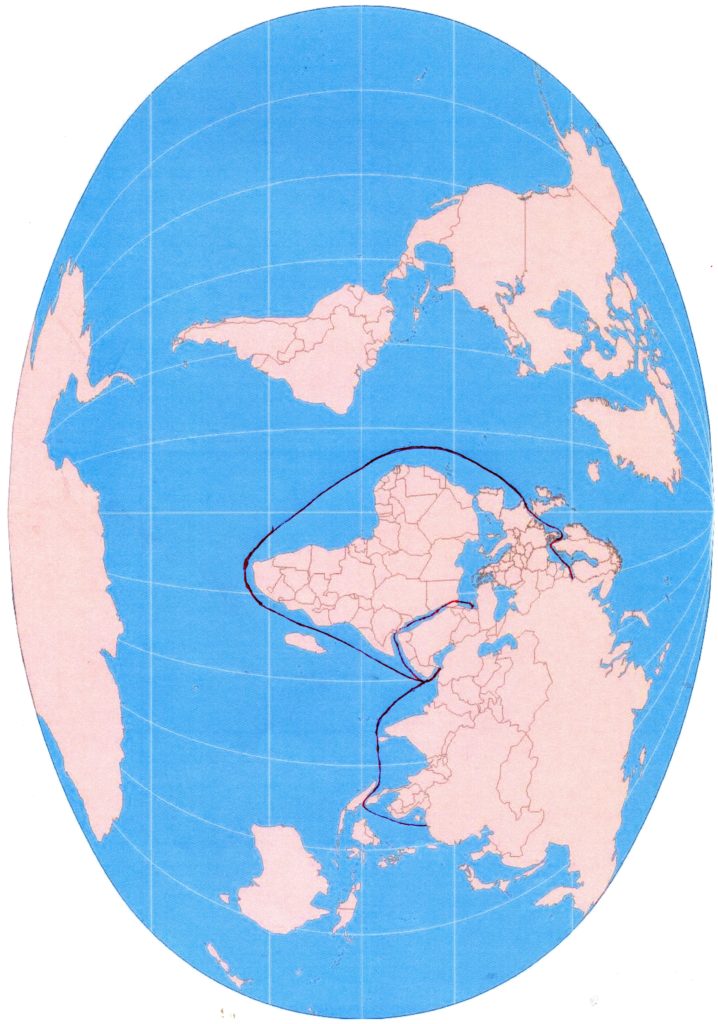October 08, 2021
by Warren L. Nelson

The ships did not cross the Atlantic Ocean to the Americas, as Iran has been announcing its ships would ever since 2011.
The ships were widely expected to go to Venezuela to deliver seven gunboats that were tied to the deck of one of the ships. It isn’t yet known if the ships returned to Iran with the gunboats still lashed to the deck. It is possible they went into port somewhere to offload them, but there has been no report of the ships docking anywhere on their way to or from Saint Petersburg in Russia.
In fact, Iran boasted that this was the main accomplishment of the cruise that the ships did not need any help from any of the countries they passed on their journey.
New Navy commander Rear Admiral Shahram Irani said the meaning of the voyage was to prove that Iran “can stage a powerful [naval] presence throughout all maritime expanses.” Actually, it proved nothing about a “powerful” naval presence since all Iran sent on the trip were Sahand, a small frigate of 1,300 tons, and a much larger supply ship, Makran, almost 100 times larger at 123,000 tons to carry the smaller ship’s fuel and food and other supplies.
In contrast, the US Navy has kept an average of about two dozen warships in and around the Persian Gulf in recent decades, collectively displacing more than 200,000 tons or almost 200 times the displacement of the Sahand. Those are warships; it doesn’t need supply ships because it has bases in the Arab countries across the Persian Gulf from Iran.
As the accompanying map shows, the Iranian Navy hasn’t exactly covered the world. Its longest journeys have been one trip to a port in southern China, just barely into the Pacific, a couple of trips to Syria just barely into the eastern Mediterranean, and the latest voyage up the Atlantic to Saint Petersburg for a visit to the Russian Navy.
Admiral Irani said the two ships that visited Saint Petersburg sailed a total of 45,000 kilometers (28,000 miles) and passed 55 countries without needing to go into port anywhere for support services.
He did not say whether the ships returned to Iran using the same route as it used going to Russia, but other officials later said it returned through the Mediterranean and Suez Canal.
Admiral Irani also said, “Iran is the only country that provides for its own naval security,” a very inaccurate claim, but one that points out the lack of allies.
And he asserted that the voyage of 133 days served to send a message of “peace and friendship” to all the countries the ships passed, although few of them even knew the ships were far off their coasts.
What mattered, he said, was that the Islamic Republic demonstrated “self-confidence and competence in the international arena.”
The oddity about the trip was that Iran was boasting of how its Navy could operate far from its home waters, while it spends so much of its time damning the US Navy for having the impertinence to sail far from its home waters by coming to the Persian Gulf.
Admiral Irani said nothing about sailing across the Atlantic and coming near the United States. The Iranian Navy has proclaimed that it would do so ever since 2011. But this summer’s voyage was the closest it has ever come to the US.
There has been a fair amount of fevered newspaper speculation in the US on a threat from Iranian ships off the US. But the US Navy doesn’t give a damn. Foreign naval vessels have a right even to sail through US territorial waters. And Russia’s Navy sails to Havana, 90 miles from the US about once a year.
But Admiral Irani seemed to see the latest trip as some kind of in-your-eye challenge to the Americans. He said, “The passage of the fleet [through] the waters in which the arrogant powers are present and the success of this mission show the capability and authority of Iran.”
The admiral also said the mission was part of the Navy’s effort to ensure security on the country’s main trade route. But the route it sailed to Russia is not the country’s main trade route. Furthermore, the Iranian Navy said the ships sailed far out into the South Atlantic and far away from the African coast. That meant they avoided the Gulf of Guinea off Nigeria, where almost half of the pirate attacks in the world are currently taking place.
A report from the International Maritime Bureau for the first quarter of 2021 said 38 incidents or 43 percent of all reported piracy incidents in that quarter occurred in the Gulf of Guinea, with only one such incident off Somalia, five in the Singapore Straits and five off Peru. The two Iranian ships did not sail in any area of instability.
The commander of the Iranian Army, Maj. Gen. Abdol-Rahim Musavi also spoke up about the Navy’s accomplishment, saying the trip to Russia left the American “terrorists” befuddled in a state of confusion and strategic bewilderment.
The US military has not expressed concern about the ships sailing in the Atlantic but have expressed concern about the possible delivery of the gunships to Venezuela. US Defense Secretary Lloyd Austin said in June, “I am deeply concerned about the proliferation of weapons of any kind in the American neighborhood.”
The Tehran Times said the US Navy spied on the “fleet” three times while it was in the Atlantic, flying a Seahawk helicopter, then an RQ-4 drone and finally a P-8 reconnaissance aircraft over the ships.
